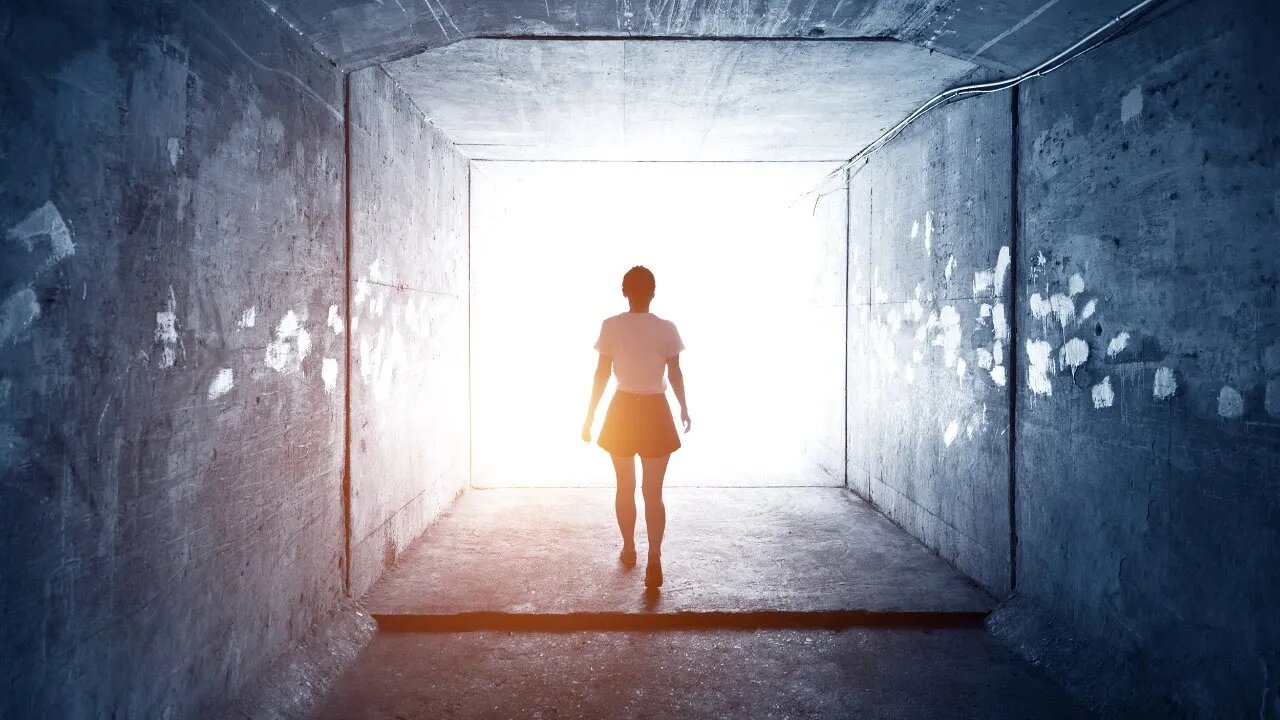Premium Only Content

Grizzly and Psychic Medium Ginette Discuss Near Death Experiences (NDE)
Near-death experiences are triggered during singular life-threatening episodes when the body is injured by a heart attack, shock, or blunt trauma such as an explosion or a fall.
These events share broad commonalities: becoming pain-free, seeing a bright light at the end of a tunnel, or detaching from one's body and floating above it and even flying off into space.
Why the mind should experience the struggle to sustain its operations in the face of a loss of blood flow and oxygen as positive and blissful rather than as panic-inducing remains a mystery.
A young Ernest Hemingway, badly injured by an exploding shell on a World War I battlefield, wrote in a letter home that “dying is a very simple thing. I’ve looked at death, and really I know. If I should have died it would have been very easy for me. Quite the easiest thing I ever did.”
Years later Hemingway adapted his own experience—that of the soul leaving the body, taking flight and then returning—for his famous short story “The Snows of Kilimanjaro,” about an African safari gone disastrously wrong. The protagonist, stricken by gangrene, knows he is dying. Suddenly, his pain vanishes, and Compie, a bush pilot, arrives to rescue him. The two take off and fly together through a storm with rain so thick “it seemed like flying through a waterfall” until the plane emerges into the light: before them, “unbelievably white in the sun, was the square top of Kilimanjaro. And then he knew that there was where he was going.” The description embraces elements of a classic near-death experience: the darkness, the cessation of pain, the emerging into the light and then a feeling of peacefulness.
PEACE BEYOND UNDERSTANDING
Near-death experiences, or NDEs, are triggered during singular life-threatening episodes when the body is injured by blunt trauma, a heart attack, asphyxia, shock, and so on. About one in 10 patients with cardiac arrest in a hospital setting undergoes such an episode. Thousands of survivors of these harrowing touch-and-go situations tell of leaving their damaged bodies behind and encountering a realm beyond everyday existence, unconstrained by the usual boundaries of space and time. These powerful, mystical experiences can lead to permanent transformation of their lives.
NDEs are not fancy flights of the imagination. They share broad commonalities—becoming pain-free, seeing a bright light at the end of a tunnel and other visual phenomena, detaching from one’s body and floating above it, or even flying off into space (out-of-body experiences). They might include meeting loved ones, living or dead, or spiritual beings such as angels; a Proustian recollection or even review of lifetime memories, both good and bad (“my life flashed in front of my eyes”); or a distorted sense of time and space. There are some underlying physiological explanations for these perceptions, such as progressively narrowing tunnel vision. Reduced blood flow to the visual periphery of the retina means vision loss occurs there first.
NDEs can be either positive or negative experiences. The former receive all the press and relate to the feeling of an overwhelming presence, something numinous, divine. A jarring disconnect separates the massive trauma to the body and the peacefulness and feeling of oneness with the universe. Yet not all NDEs are blissful—some can be frightening, marked by intense terror, anguish, loneliness and despair.
It is likely that the publicity around NDEs has built up expectations about what people should feel after such episodes. It seems possible, in fact, that distressing NDEs are significantly underreported because of shame, social stigma and pressure to conform to the prototype of the “blissful” NDE.
Any close brush with death reminds us of the precariousness and fragility of life and can strip away the layers of psychological suppression that shield us from uncomfortable thoughts of existential oblivion. For most, these events fade in intensity with time, and normality eventually reasserts itself (although they may leave post-traumatic stress disorder in their wake). But NDEs are recalled with unusual intensity and lucidity over decades.
A 2017 study by two researchers at the University of Virginia raised the question of whether the paradox of enhanced cognition occurring alongside compromised brain function during an NDE could be written off as a flight of imagination. The researchers administered a questionnaire to 122 people who reported NDEs. They asked them to compare memories of their experiences with those of both real and imagined events from about the same time. The results suggest that the NDEs were recalled with greater vividness and detail than either real or imagined situations were. In short, the NDEs were remembered as being “realer than real.”
-
 LIVE
LIVE
SpartakusLIVE
5 hours ago#1 Shadow BANNED Hero
278 watching -
 2:17:46
2:17:46
Kim Iversen
6 hours agoTrump To SMUG Netanyahu: Let's Clear “All” Palestinians From Gaza! | RFK Jr, Tulsi Move On To Round Two
47.8K160 -
 30:25
30:25
Standpoint with Gabe Groisman
1 day agoDemocrats Are Stalling Trump Appointments with Senator Rick Scott
68.1K15 -
 1:00:24
1:00:24
The StoneZONE with Roger Stone
6 hours agoAnthony Fauci’s Brutal History Of Animal Torture Exposed! | The StoneZONE w/ Roger Stone
45.3K15 -
 1:03:38
1:03:38
Man in America
7 hours agoUSAID Corruption, $21 TRILLION Missing, & the End of the US Global Empire?
22.1K3 -
 56:38
56:38
Flyover Conservatives
7 hours ago6 Steps to Take Advantage of Trump’s New Golden Age! - Clay Clark | FOC Show
18.3K1 -
 1:15:25
1:15:25
Glenn Greenwald
7 hours agoTulsi and RFK Jr. Approved by Key Senate Committees; Trump Meets Netanyahu: Wants to Cleanse Gaza; Pro-Palestinian Group Suspended at UMich | SYSTEM UPDATE #402
77K93 -
 1:43:57
1:43:57
Danny Polishchuk
7 hours agoThe Funniest Call In Show On Earth - Live From New York City's Best Comedy Club
35.2K1 -
 1:41:13
1:41:13
megimu32
7 hours agoON THE SUBJECT: Will the Super Bowl Be WOKE??!
30K6 -
 1:18:26
1:18:26
Redacted News
8 hours agoBREAKING! USAID Created and Funded COVID-19 Virus and Bioweapons, RFK and Tulsi pass major hurdle
150K195